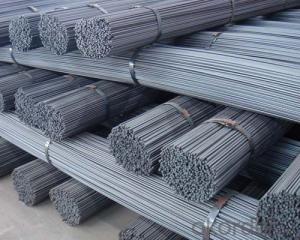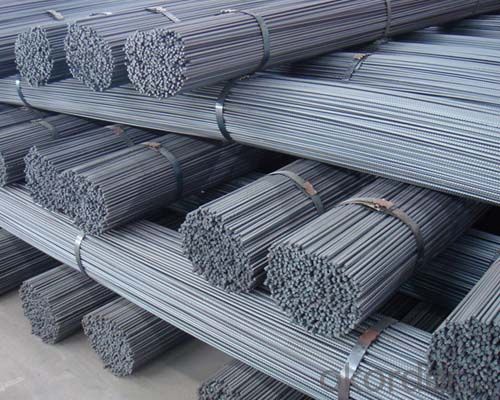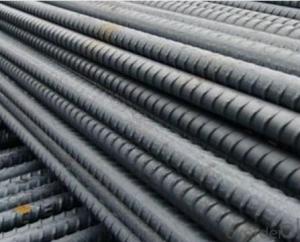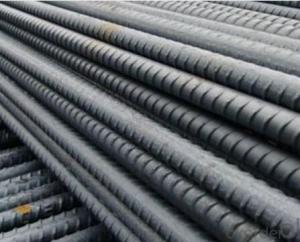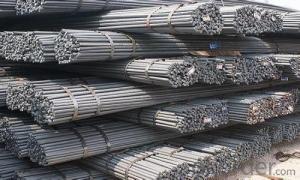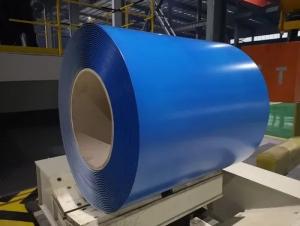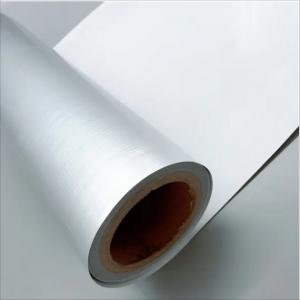Rebar Home Depot 3/8 - Reinforcing Deformed Steel Bars Grade HRB400-HRB500
- Loading Port:
- Tianjin
- Payment Terms:
- TT OR LC
- Min Order Qty:
- 25 m.t.
- Supply Capability:
- 20000 m.t./month
OKorder Service Pledge
OKorder Financial Service
You Might Also Like
Specification
OKorder is offering high quality Hot Rolled Rebars at great prices with worldwide shipping. Our supplier is a world-class manufacturer of steel, with our products utilized the world over. OKorder annually supplies products to Africa, North American and Asian markets. We provide quotations within 24 hours of receiving an inquiry and guarantee competitive prices.
Product Applications:
Deformed bar is widely used in buildings, bridges, roads and other engineering construction. Big to highways, railways, bridges, culverts, tunnels, public facilities such as flood control, dam, small to housing construction, beam, column, wall and the foundation of the plate, deformed bar is an integral structure material. With the development of world economy and the vigorous development of infrastructure construction, real estate, the demand for deformed bar will be larger and larger.
Product Advantages:
OKorder's Hot Rolled Rebars are durable, strong, and resist corrosion.
Main Product Features:
· Premium quality
· Prompt delivery & seaworthy packing (30 days after receiving deposit)
· Corrosion resistance
· Can be recycled and reused
· Mill test certification
· Professional Service
· Competitive pricing
Product Specifications:
Manufacture: Hot rolled
Grade: HRB400 – HRB500
Certificates: ISO, SGS, BV, CIQ
Length: 6m – 12m, as per customer request
Packaging: Export packing, nude packing, bundled
Grade | Technical data of the original chemical composition (%) | ||||||
C | Mn | Si | S | P | V | ||
HRB400 | ≤0.25 | ≤1.60 | ≤0.80 | ≤0.045 | ≤0.045 | 0.04-0.12 | |
Physical capability | |||||||
Yield Strength (N/cm²) | Tensile Strength (N/cm²) | Elongation (%) | |||||
≥400 | ≥570 | ≥14 | |||||
Theoretical weight and section area of each diameter as below for your information:
Diameter(mm) | Section area (mm²) | Mass(kg/m) | Weight of 12m bar(kg) |
6 | 28.27 | 0.222 | 2.664 |
8 | 50.27 | 0.395 | 4.74 |
10 | 78.54 | 0.617 | 7.404 |
12 | 113.1 | 0.888 | 10.656 |
14 | 153.9 | 1.21 | 14.52 |
16 | 201.1 | 1.58 | 18.96 |
18 | 254.5 | 2.00 | 24 |
20 | 314.2 | 2.47 | 29.64 |
22 | 380.1 | 2.98 | 35.76 |
25 | 490.9 | 3.85 | 46.2 |
28 | 615.8 | 4.83 | 57.96 |
32 | 804.2 | 6.31 | 75.72 |
36 | 1018 | 7.99 | 98.88 |
40 | 1257 | 9.87 | 118.44 |
50 | 1964 | 15.42 | 185.04 |
FAQ:
Q1: Why buy Materials & Equipment from OKorder.com?
A1: All products offered by OKorder.com are carefully selected from China's most reliable manufacturing enterprises. Through its ISO certifications, OKorder.com adheres to the highest standards and a commitment to supply chain safety and customer satisfaction.
Q2: How do we guarantee the quality of our products?
A2: We have established an advanced quality management system which conducts strict quality tests at every step, from raw materials to the final product. At the same time, we provide extensive follow-up service assurances as required.
Q3: Can you offer the third part inspection certificates ?
A3: Yes, we can apply third part inspection before shipping, such as SGS, BV, etc .
Images
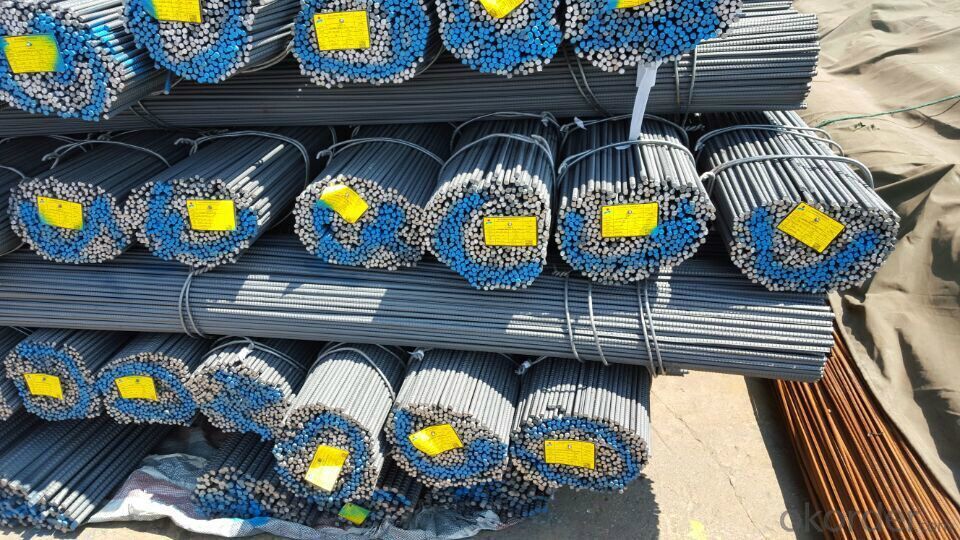
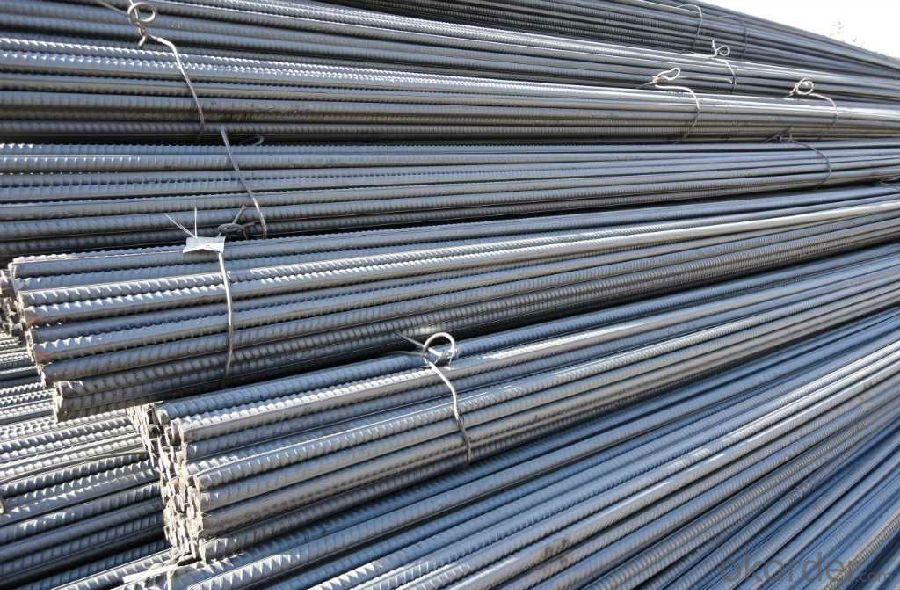
- Q:Are there any limitations on using steel rebars in cold climates?
- Using steel rebars in cold climates comes with certain limitations. The primary concern is the possibility of corrosion caused by moisture, salt, and de-icing chemicals commonly applied to roads and bridges during winter. Exposure to these elements can lead to rusting and gradual weakening of steel rebars, compromising the concrete's structural integrity. To address this issue, there are several measures that can be taken. One common approach is the use of epoxy-coated rebars, which offer protection against moisture and chemicals. Another option is to utilize stainless steel rebars, as they have high resistance to corrosion. However, it is worth noting that these alternatives can be more expensive compared to traditional steel rebars. Additionally, the construction process in cold climates presents its own set of challenges. Low temperatures result in slower curing and strengthening of concrete, which can affect the overall project timeline. To ensure proper curing, special precautions such as heating the concrete or using accelerators may be necessary. To guarantee compliance and safety, it is crucial to consult local building codes and regulations that are specific to cold climates. Seeking guidance from engineering professionals experienced in cold weather construction practices can provide valuable insights and recommendations to address the limitations associated with using steel rebars in these conditions.
- Q:Can steel rebars be used in historical buildings restoration?
- Indeed, the utilization of steel rebars is applicable in the restoration of historical buildings. These rebars, commonly employed in construction, are capable of providing structural reinforcement to fortify the existing structures of such buildings. Through careful implementation, the integration of steel rebars can effectively restore stability and integrity while preserving the historical significance of these structures. Nevertheless, it is crucial to consider the specific requirements and guidelines for restoring historical buildings, thus ensuring that the use of steel rebars does not compromise the authenticity or aesthetic value of the structure. Successful incorporation of steel rebars in the restoration process necessitates proper planning, consultation with preservation experts, and adherence to conservation principles.
- Q:Can steel rebars be used in the construction of office buildings?
- Indeed, office buildings can utilize steel rebars for construction purposes. When it comes to concrete structures, such as office buildings, steel rebars are frequently employed as reinforcements. By enhancing the concrete's resilience and rigidity, they contribute to its enhanced ability to withstand cracks and bending. Consequently, the incorporation of steel rebars guarantees the structural soundness of the building, particularly in regions subjected to substantial stress or load-bearing demands. Moreover, steel rebars boast durability and longevity, rendering them a dependable option for construction endeavors.
- Q:How do steel rebars resist corrosion?
- Steel rebars resist corrosion due to the presence of a protective oxide layer that forms on their surface when exposed to oxygen and moisture. This oxide layer acts as a barrier, preventing further contact between the steel and corrosive agents, thus extending the rebars' lifespan and durability.
- Q:How do steel rebars contribute to the overall sustainability of a project?
- There are several ways in which steel rebars contribute to the overall sustainability of a project. Firstly, their high durability and long lifespan mean they do not need frequent replacement, reducing resource consumption and minimizing the need for new material production. This, in turn, decreases the environmental impact of the project. Moreover, steel rebars are fully recyclable. When they reach the end of their life cycle, they can be easily collected, melted down, and repurposed into new steel products. This recycling process significantly reduces the demand for raw materials, conserves energy, and reduces landfill waste. Additionally, steel rebars provide structural strength and enhance the overall safety and resilience of the project. By reinforcing concrete structures, they increase load-bearing capacity and resistance to external forces like earthquakes or extreme weather events. This ensures the project's longevity and stability, reducing the need for future repairs or reconstruction. Lastly, the use of steel rebars in construction projects often leads to shorter construction time and lower maintenance costs. Their ease of handling and installation allows for efficient construction processes, resulting in reduced energy consumption and lower greenhouse gas emissions. Furthermore, their durability and low maintenance requirements minimize the need for ongoing repairs and replacements, resulting in cost savings over the project's lifespan. In conclusion, steel rebars contribute to the overall sustainability of a project through their durability, recyclability, and ability to enhance structural strength and safety. Their use reduces resource consumption, waste generation, and energy consumption, while also providing long-term cost savings. Incorporating steel rebars in construction projects is a sustainable choice that supports environmental conservation, economic efficiency, and social resilience.
- Q:How are steel rebars protected against extreme weather conditions?
- Various methods are employed to safeguard steel rebars from extreme weather conditions. One prevalent technique involves the application of protective coatings, which act as a barrier between the rebar and the environment, preventing exposure to moisture, oxygen, and other corrosive elements. These coatings can consist of epoxy, zinc, or concrete-based materials. Another method of protection entails the incorporation of corrosion inhibitors into the concrete during the mixing process. These inhibitors create a protective layer on the rebar's surface, hindering the infiltration of moisture and corrosive substances. Furthermore, ensuring an adequate thickness of concrete cover is imperative for shielding rebars against harsh weather elements. This cover acts as a physical barrier, impeding the access of moisture and corrosive agents to the steel. Moreover, design considerations are taken into account to protect rebars from extreme weather conditions. In areas prone to severe weather or high humidity, engineers may specify the use of stainless steel rebars or epoxy-coated rebars due to their enhanced corrosion resistance properties. Regular maintenance and inspections are also crucial for the long-term protection of rebars against extreme weather conditions. By conducting inspections, any signs of corrosion or damage can be identified promptly, enabling timely repairs and preventative measures. In conclusion, the protection of steel rebars from extreme weather conditions is achieved through the application of protective coatings, the incorporation of corrosion inhibitors, the provision of proper concrete cover, and the consideration of design factors. Regular maintenance and inspections are vital for ensuring their ongoing protection.
- Q:What are the common defects observed in steel rebars?
- Some common defects observed in steel rebars include surface imperfections such as cracks, pits, and corrosion, as well as improper dimensions or shape, inadequate strength, and poor welding.
- Q:What are the international standards for steel rebars?
- Various organizations and bodies, such as the International Organization for Standardization (ISO), the American Society for Testing and Materials (ASTM), and the European Committee for Standardization (CEN), set the international standards for steel rebars. ISO establishes standards for steel rebars through ISO 15630, which covers both hot-rolled and cold-worked rebars. This standard outlines the requirements for the chemical composition, mechanical properties, dimensions, and tolerances of rebars used in reinforced concrete structures. ASTM has developed multiple standards for steel rebars, such as ASTM A615/A615M and ASTM A706/A706M. ASTM A615/A615M focuses on deformed and plain carbon-steel rebars for concrete reinforcement, specifying the chemical composition, mechanical properties, dimensions, and marking requirements. On the other hand, ASTM A706/A706M concentrates on low-alloy steel rebars with improved weldability, suitable for concrete structures that require welding. In Europe, CEN has established the primary standard for steel rebars as the Eurocode 2 (EN 1992-1-1). This code provides design rules for the structural use of concrete and includes guidelines for the selection and utilization of rebars. Additionally, CEN has also developed EN 10080, which specifies the requirements for steel rebars used in concrete reinforcement, covering chemical composition, mechanical properties, dimensions, and tolerances. These international standards guarantee the quality and consistency of steel rebars utilized in construction projects worldwide. Complying with these standards helps ensure the safety and reliability of reinforced concrete structures by providing guidelines for material properties, manufacturing processes, and quality control measures.
- Q:What is the effect of overloading on steel rebars?
- Overloading on steel rebars can have a detrimental effect on their structural integrity. It can lead to deformation, bending, or even fracture of the rebars, compromising the overall strength and stability of the reinforced structure. Additionally, overloading can accelerate corrosion processes, reducing the rebars' lifespan and potentially causing structural failure. Therefore, it is essential to ensure that steel rebars are not subjected to excessive loads to maintain their performance and prevent potential hazards.
- Q:What is the process of calculating the required quantity of steel rebars for a project?
- The process of calculating the required quantity of steel rebars for a project involves several key steps. Firstly, you need to determine the design requirements and specifications of the project. This includes understanding the structural drawings, plans, and any relevant building codes or regulations. Next, you need to identify the specific areas where steel rebars will be used. This can include foundations, columns, beams, slabs, and any other structural elements that require reinforcement. Once the areas are identified, you need to calculate the total length of rebars required for each element. This is done by measuring the dimensions of the elements and determining the required spacing and overlap of the rebars. After obtaining the lengths, you need to consider the bar diameter and spacing requirements, as specified in the design. This will help you calculate the number of rebars needed for each element. In addition to the length and number of rebars, you also need to consider wastage and additional reinforcement requirements. It is common practice to add a percentage of wastage (usually around 2-5%) to account for cutting and bending of the rebars. You may also need to add extra bars for special conditions or to meet the design requirements. Finally, you should create a detailed bar bending schedule (BBS) that includes all the necessary information such as bar sizes, lengths, shapes, and placement details. This schedule acts as a guide for the construction team during the installation process. It is important to note that the process of calculating the required quantity of steel rebars may vary depending on the complexity and size of the project. It is recommended to consult with a structural engineer or a professional rebar detailer to ensure accurate calculations and adherence to the project's specifications.
1. Manufacturer Overview |
|
|---|---|
| Location | |
| Year Established | |
| Annual Output Value | |
| Main Markets | |
| Company Certifications | |
2. Manufacturer Certificates |
|
|---|---|
| a) Certification Name | |
| Range | |
| Reference | |
| Validity Period | |
3. Manufacturer Capability |
|
|---|---|
| a)Trade Capacity | |
| Nearest Port | |
| Export Percentage | |
| No.of Employees in Trade Department | |
| Language Spoken: | |
| b)Factory Information | |
| Factory Size: | |
| No. of Production Lines | |
| Contract Manufacturing | |
| Product Price Range | |
Send your message to us
Rebar Home Depot 3/8 - Reinforcing Deformed Steel Bars Grade HRB400-HRB500
- Loading Port:
- Tianjin
- Payment Terms:
- TT OR LC
- Min Order Qty:
- 25 m.t.
- Supply Capability:
- 20000 m.t./month
OKorder Service Pledge
OKorder Financial Service
Similar products
New products
Hot products
Hot Searches
Related keywords
